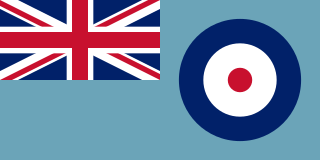
The Royal Air Force Regiment is part of the Royal Air Force and functions as a specialist corps. Founded by Royal Warrant in 1942, the Corps carries out basic security tasks relating to the [protection of] delivery of air power. Examples of such tasks are non-combatant evacuation operation (NEO), recovery of downed aircrew, defence of airfields by way of aggressively patrolling and actively seeking out infiltrators in a large area surrounding airfields. The key tenet of the RAF Regiments role is based around defensive security operations, rather than the Army’s more traditional offensive infantry role, which is to close with and kill the enemy; notwithstanding, this does require active patrolling just outside the Airfield perimeter. In addition the RAF Regiment provides Joint Terminal Attack Controllers (JTACs) to the British Army in the Tactical Air Control Party (TACP) role, and provides a very small commitment to the Special Forces Support Group as Tactical air controllers and some CBRN specialists.

No. 2 Group is a group of the Royal Air Force which was first activated in 1918, served from 1918–20, from 1936 through the Second World War to 1947, from 1948 to 1958, from 1993 to 1996, was reactivated in 2000, and is today part of Air Command.

The Royal Auxiliary Air Force (RAuxAF), formerly the Auxiliary Air Force (AAF), together with the Air Force Reserve, is a component of His Majesty's Reserve Air Forces. It provides a primary reinforcement capability for the regular service, and consists of paid volunteers who give up some of their weekends, evenings and holidays to train at one of a number of squadrons around the United Kingdom. Its current mission is to provide trained personnel in support of the regular RAF.

No. 607 Squadron is an auxiliary squadron of the Royal Air Force. It was formed in 1930 as a bomber unit in the Auxiliary Air Force and changed in 1936 to the fighter role. It fought in that role during the Second World War in Europe and Asia. After the war, in 1946, the squadron reformed as a fighter unit. Awarded the title Royal Auxiliary Air Force by King George in 1947, 607 Sqn was disbanded with all the other flying units of the RAuxAF on 10 March 1957. It reformed on 5 January 2015, as a General Service Support Squadron (GSS).
No. 4626 Aeromedical Evacuation Squadron is a unit of the British Royal Auxiliary Air Force, which manages, maintains and trains its personnel for operational readiness in support of RAF requirements for Aeromedical Evacuation and Pre-Hospital Emergency Care, Primary Healthcare (PHC) and individual augmentees to other military healthcare capabilities, in times of conflict or crisis.

No. 616 Squadron is an active Reserve unit of the Royal Auxiliary Air Force (RAuxAF) assigned to the RAF ISTAR Force at RAF Waddington. It was originally formed as a unit of the British Auxiliary Air Force in 1938, active throughout World War 2 as a fighter unit, becoming the 1st operational RAF unit to fly jets and disbanded in 1957. The unit reformed in its current guise in April 2019 as 616 Squadron Royal Auxiliary Air Force.
663 Squadron AAC is a flying unit of the British Army's Army Air Corps (AAC).

No. 26 Squadron RAF Regiment was a squadron of the RAF Regiment between 1951 and 2008. It was reformed in 2010 as a specialist Chemical, Biological, Radiological and Nuclear (CBRN) Squadron based at RAF Honington in Suffolk, but as of November 2024, it had been disbanded.
No. 503 Squadron RAuxAF was an auxiliary squadron of the Royal Air Force. It operated as a bomber squadron in the 1920s and 1930s, but was disbanded before the outbreak of the Second World War.
No. 612 Squadron RAF was originally formed in 1937 as an Army Co-operation unit, and flew during the Second World War in the General Reconnaissance role. After the war the squadron was reformed and flew in the Day Fighter role until disbanded in 1957. At present the squadron has a non-flying role as a RAF Medical Reserves unit.

No 606 (Chiltern) Squadron was formed as a Royal Auxiliary Air Force helicopter support squadron in 1996 at RAF Benson and gaining its official number three years later on 1 October 1999. It provides personnel for the RAF tactical support helicopter fleet and does not operate any aircraft itself.

The RAF Force Protection Force was created in 2004 as the successor to the Tactical Survive to Operate Headquarters. It consisted of Force Protection Wings which were tasked with protection of RAF stations in the UK and overseas. Each Wing was based around RAF Regiment and RAF Police squadrons, with supporting personnel.
No. 2620 Squadron RAuxAF Regiment is a Royal Auxiliary Air Force RAF Regiment reserve squadron based at RAF Marham, in Norfolk.
At the end of the Cold War in 1989, the Royal Air Force (RAF) structure was as follows:

This is the structure of the Royal Air Force.

No. 505 (Wessex) Squadron, Royal Auxiliary Air Force (RAuxAF) is a general support squadron of the Royal Air Force's reserve component, the Royal Auxiliary Air Force.
No. 7006 Intelligence Squadron RAuxAF is a specialist intelligence unit of the Royal Air Force's reserve component, the Royal Auxiliary Air Force. Since 1997, the squadron has been the only dedicated reserve intelligence squadron in the RAF.
The Combat Readiness Force is the ground fighting force of the Royal Air Force. It provides Force Protection Wings and RAF Regiment field squadrons to defend the RAF. It works closely with the US Air Force Security Forces, its American counterpart.










